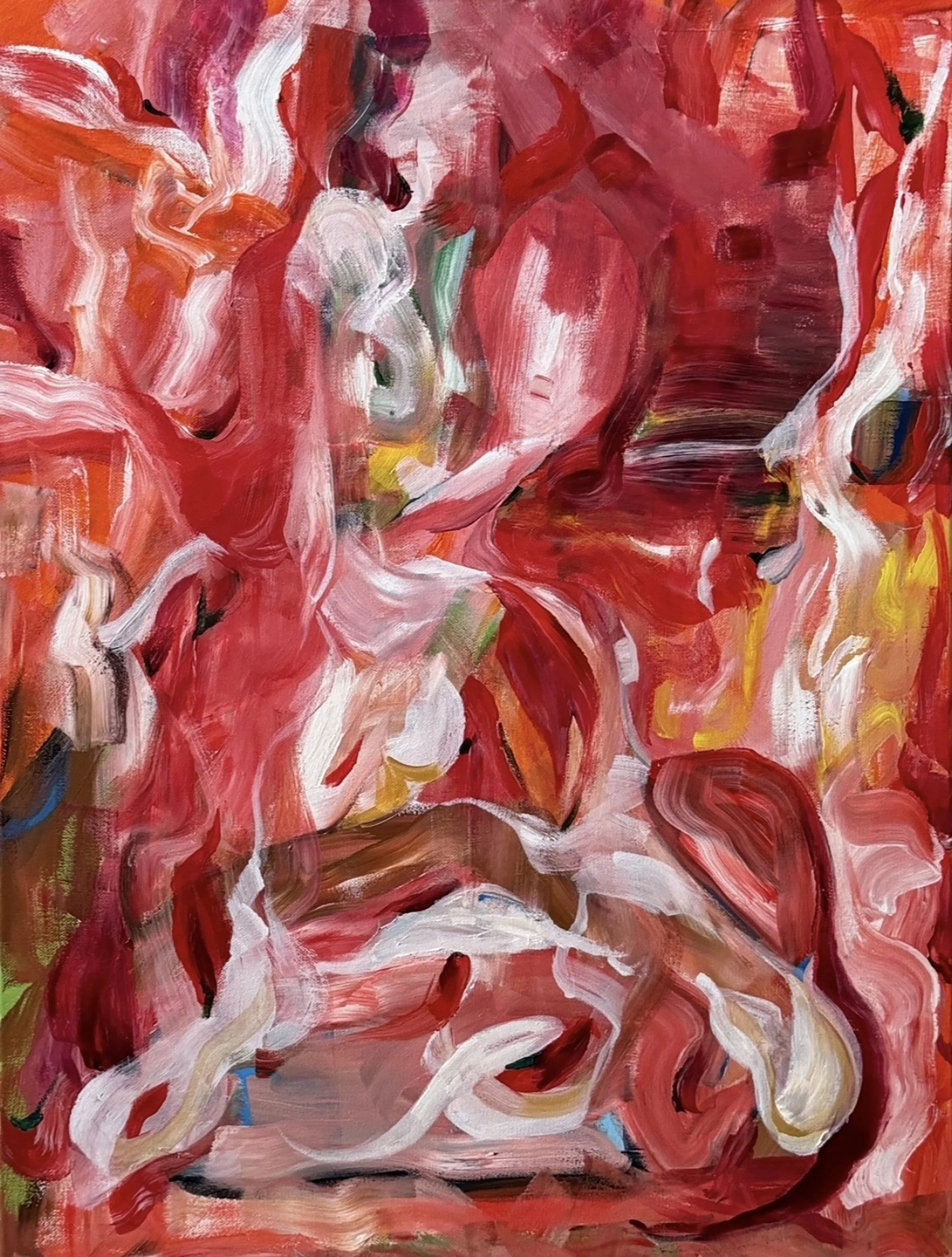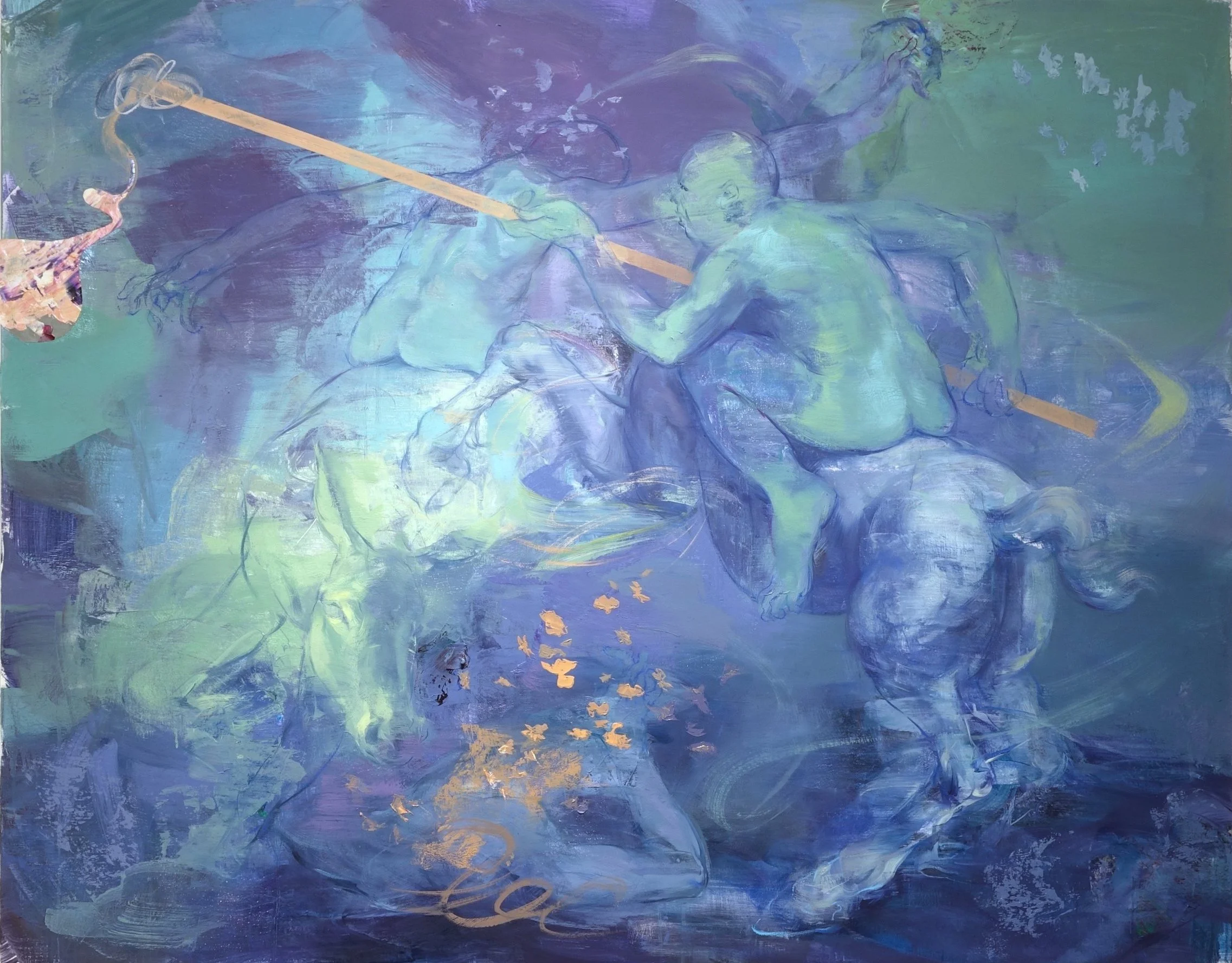Stephanie Zwerschke is a painter from Munich (1978), and lives in southern Germany.
Stephanie Zwerschke received her "Magister Artium"-the degree at Passau University in 2004. Since 2018 she is a free painter with her little studio-gallery ("Atelier 351") in Bad Feilnbach. Stephanie draws her inspiration from all her surroundings that incorporate nature, fragility, age, and beauty in decay. She experiments with the rather unusual painting media steel plates and rust and developed her techniques. Stephanie has taken part in several national and international juried group exhibitions and online-exhibitions, as well as solo shows. Her paintings are held in private collections, mainly in Germany, represented by Gallery Hyna in Rottach-Egern, Germany. Stephanie Zwerschke’s working media are to certain degree creators of their own: galvanized steel plates, acids, and salt, corrosion.
She let go of human-made perfectionism, let the artwork live and react on the results, be spontaneous and cooperative. In her rust paintings, she loves nature's creativity and power, which is controllable and not controllable at the same time. It's about being hurt and healing oneself; it's about aesthetics in decay. The artist transfers the metaphorical value of rusting steel to the level of her art through the images she displays. Stephanie embeds nature from the beginning of her artwork. And it is a beautiful thought that there is a living part to it – a vivid counterbalance to the artist's intention.
Eyes On _ Stephanie Zwerschke©
Describe the intention behind your art. How does this intention successfully find expression in your work?
When my husband and I bought a house, it was clear that we didn`t want to build a new one but buy an old one and restore it. I love to repair, transfer, and use “old” things. Things that lived, things that tell a story, have a spirit. Their presence broadens the feeling that I am part of history longer than the only mine. This is similar to my art. When some time ago, I found this significant amount of steel plates from an office clearing, partly rusted and dirty, I immediately fell in love with them as my new painting media. They are used plates that already had a life before art, and I want to conserve that life by giving them a new meaning through my paintings.
Can you talk a little about your formative years as an artist - what were the influences that shaped who you would become?
I always loved to be self-taught in all fields of skills, be it sewing or sailing, craft, or art. I started painting while I was studying at University in Verona, Italy, as a pastime. It became more and more part of my life, but it was only after the birth of my two sons that it became more than a hobby. Any school or teacher hasn’t shaped me – I instead “followed” contemporary artists I love by watching their progress, analyzing their paintings, letting their different styles inspire myself. Now and then, I asked myself, ‘What is an artist?’ The one who learned it from scratch? The one who just lets his feelings flow on a medium? I decided to go this “free” way because of the expression of my mood, and the satisfaction seeing the completed painting is the power that shapes me as an artist every day.
How do you feel your work is unique and truly your own?
Working with galvanized steel is not a technique that I found in an art course. It was a process that started with the find of a large amount of discarded metal plates. I loved the patina of the dishes, and I started various experiments on corrosion. By trials, I discovered how to start a rusting process in a defined area by removing the zinc and keeping other areas intact. I was enthusiastic about creating rust patterns with salt, acids, and other liquids. Then I added themes by using oil color, always depicting metaphorical values of rust – nature, age, fragility, and beauty in decay. I discovered this by myself and for myself. Although maybe other artists have already worked with rust, rust paint, or rusted materials, my paintings physically and thematically originated from my approach.
What is the most significant advantage of creating art using a variety of artistic materials and techniques?
Isn’t it wonderful that you are not limited?! Neither your thoughts are, nor is your technique. Thinking of my “Bear Attack”-painting, the use of unconventional materials allowed me to create nature with nature - the bear attack is not only an oil painting of a bear, but the bear is also portrayed by nature through the rusted surface. Both incorporate nature in its most direct way, truly and figuratively.
Bear Attack_ Stephanie Zwerschke©
Bond Girl _ Stephanie Zwerschke©
What do you believe is a crucial element in creating a good painting?
The feeling I put in it and the feel the beholder gets when looking at art is crucial in a painting. If I stand in front of a painting and it mesmerizes me, maybe at first I cannot even tell why I think it is a good painting. Perhaps I discover the reason why only at second glance. I can be mesmerized by painting techniques, colors, or the subject. But the only thing that remains, in the end, is the mood a painting conveys.
Do you listen to music while working? If so, what is your favorite genre of music?
I would say YES and NO at the same time. When I start a painting, I start with the rust. While doing this, I am physically very active; I have to jump around the plate, stick adhesive tape to it, level the plate, handle with varnish and muriatic acid, I wear a respirator mask, gloves, and safety glasses. I am entirely rapt in this situation. It has to be quiet around me as if I wanted to hear my inspiration.
When it comes to the part of the oil painting, the situation is more relaxed. I have my mp3-player with around 7.000 songs that randomly appear, and I just listen. By then, the theme or subject of my painting is clear, and I don’t need to hear my inner voice but to finish technically what I decided before.
Spring is here _ Stephanie Zwerschke©
Can you tell us about any upcoming shows or collaborations you have on the horizon?
I usually am in collaboration with a well-known Austrian gallery for recurring events in Austria and Italy. Unfortunately, due to the actual crisis, these exhibitions and fairs are canceled for an indefinite time, as everywhere. So my efforts are moving to online exhibitions and collaborations. Fortunately, my local art association arranges a wider variety of online events where I will also focus on.
What for you is the most enjoyable part of your art?
In my paintings, I love the integration of something that is only partially controllable. The spread, the color, the intensity, and the patterns of rust - they are creative actors themselves and have, to a certain degree, creativity of their own. Even if I have an idea in mind, I have to collaborate with nature and wait, what she does with our joint medium steel. This makes the process of interaction between me and nature. Although the rust is conserved in the end, I love the thought that there is a vivid and living part in my paintings.



















